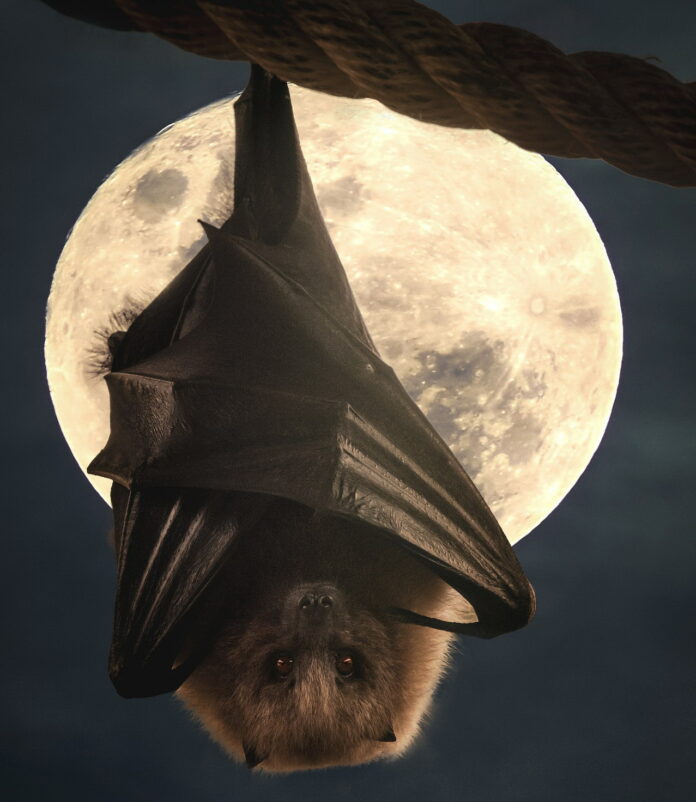Bats have been living on Earth for over 50 million years and inhabit all continents except Antarctica. Folklore endows these small winged mammals with a dubious reputation and mystical abilities. To many, they seem almost like creatures from hell, waiting only for the moment to drink the blood of unsuspecting victims or transmit incurable diseases through bites. Or, in extreme cases, turn an innocent person into a mutant.
However, all these “superpowers” are nothing more than myths, far from reality. The association of these creatures with witchcraft and black magic only began in the Middle Ages. Before that, bats were regarded quite neutrally.
The negative image of bats was further popularized by the imagination of the fantasy writer Bram Stoker, author of the novel about Count Dracula. In reality, comparing bats to a cruel and unprincipled bloodsucker is not entirely accurate. Out of the 1,300 known species of bats, only three require blood to satisfy hunger. Moreover, none of the bat species attacks humans. Most bats feed on insects, nectar, or fruit.
Description of the Species
- Bats, Latin name Microchiroptera, are a collective term for small furry mammals capable of flight. During the day, these creatures are generally inactive and lethargic, but at night, they are quite fast, active, and maneuverable.
- These creatures are quite tiny. Their body length typically does not exceed 3.5-5 cm, and their weight ranges from 4-10 grams (these data are averaged, more accurate information can be obtained by studying the characteristics of each specific species).
- They have a very specific body structure: elongated head, short but sturdy neck, torso, and the most notable part – their wings.
- Interestingly, the “flying apparatus” of mammals differs significantly from that of birds. Modified forelimbs serve as a frame for the “membranous mantle,” while the hind legs are not included in the wings. They are needed for grasping. Bats use a special fold that is moved by a large chest muscle to catch air currents.
- The facial section of bats’ skulls is usually shortened, often featuring various bumps, protrusions, and folds. The shape and size of the nose and ears vary depending on the species.
- Bats have very poor eyesight; their small eyes are of little help in navigating the surroundings. Instead, they use echolocation – special sounds that bounce off objects in the external world, guiding the bats on where and how to move. These signals are not accessible to the human ear.
Why Are Bats Called That?
- There is little in common between these nocturnal sky conquerors and rodents, except for their “name.” Most likely, they were named this way because of their small size and their ability to produce squeaks very similar to those of mice. However, that’s where the resemblance ends.
- In fact, there are many differences between them. They have completely different body structures, lifestyles, diets, and so on. Field mice are pests, while bats are very useful creatures in agriculture, as they help control pests.
Habitat
- Bats are not picky about natural conditions, so they are found in almost every corner of our planet. They have not adapted to cold, so they have not colonized Antarctica, tundra, and other extreme areas.
- Bats prefer places with hot and humid climates, such as the basins of tropical rivers. Colonies consisting of more than 300 species can be found on the banks of the Amazon and Congo rivers, while only 40 species are found in Russia.
- Another established stereotype is that bats only choose dark, creepy caves for nesting. The truth is, winged creatures don’t need light to exist – they lead a twilight or nocturnal lifestyle. Any natural shelter suits them as a habitat: a crevice in a rock, a hollow in a tree, or even a burrow abandoned by another animal. Bats can also settle in man-made structures such as mines, attics, or even between window shutters.
- Bats adapt to the terrain in which they live. This is especially noticeable in their diet: some species prefer vegetarianism, while others need meat and blood (usually insects). If the temperature in the area where a colony of flying mammals lives drops regularly below 0°C, individuals migrate to warmer regions before the cold season begins. If the temperature unexpectedly drops, bats endure the adverse conditions in a state of torpor. Biologists call these adaptations a natural masterpiece.
- Unfortunately, most bat species are currently on the brink of extinction.
Interesting Facts About Bats
- August 26th is celebrated as International Bat Night.
- Among these creatures, there are no fat ones, despite eating a lot and often. It’s all because of their high metabolism. Bats expend a lot of energy for flight, so their bodies need constant replenishment.
- Bats find it very difficult to take off from the ground, so they sleep upside down to be able to push off with their hind legs from the roost and immediately fly away.
- The Chinese have a completely different attitude towards small flyers. They consider these animals positive, not bloodthirsty monsters like Europeans do.
- There are no dirty bats. Before leaving the nest, each individual pays attention to personal hygiene and cleans its fur.
- A bat colony is always led by a leader. It is he who decides where the flock will fly and where it will hunt for food.
- In San Antonio (USA, Texas), in Bracken Cave, the largest known colony of bats lives. It consists of more than 20 million individuals.
- Bats reproduce only once a year. But they make perfect parents. A female can recognize her offspring by smell and unique squeaks among thousands of similar ones.
- The biggest natural enemy of bats is not a predator, but a fungus that affects the faces and wings of animals during periods of torpor.
- Mangoes, bananas, and avocados would have long ceased to exist if nectar-feeding bats did not actively participate in their pollination.
